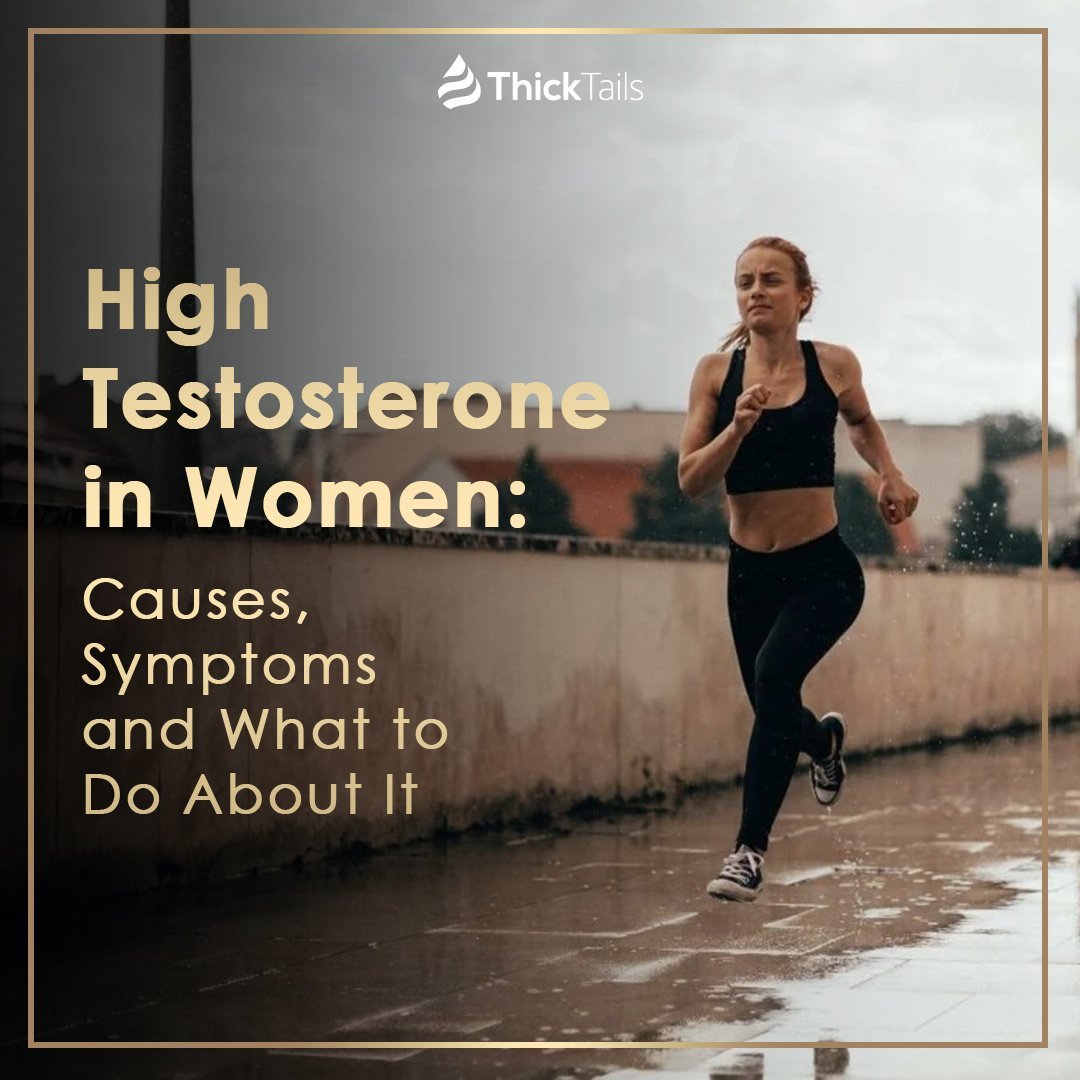A person’s sexuality is biologically determined through the gonads, and these sexual organs primarily produce sex hormones that affect the body’s biological activities. Luckily, women both have male and female sex hormones responsible for regulating reproductive and sexual functions. However, hormonal fluctuations can cause imbalance and adversely affect various internal processes.
Androgens, such as testosterone, are also abundant in women’s bodies. It appears that women also need androgens for survival. These hormones are believed to promote hair growth at normal levels. However, excessive testosterone levels in the body can be detrimental to a woman’s health, especially for her hair.
What is testosterone, and how does it influence the quality of your locks? If you’re intrigued about this super hormone, discover the reasons behind its increasing levels and find ways to prevent it from causing hair growth problems.
Testosterone, the Masculine Hormone
Testosterone is an androgen that can be also be found in females. These male hormones mainly contribute to hair growth and muscle mass. It even regulates bone formation, increases a woman’s sex drive, and improves the cardiovascular system. In short, testosterone is an essential hormone that every woman needs to keep herself healthy and strong.
Still, too much of everything can be devastating. Likewise, extreme amounts of testosterone in the body can be problematic, most especially for women. This hormonal influx can lead to testosterone’s conversion into its more potent form called dihydrotestosterone. As a result, it can affect various biological processes, including hair growth.
I Wonder Why: Causes of High Testosterone Levels in Women
Why do testosterone levels suddenly increase? If you've been wondering about the abnormal surge of androgens, check out several reasons behind this androgen invasion.
1. Stress and Anxiety
Have you been stressed from work? If yes, then you must know that stress is a leading cause of hormonal imbalance. Experiencing tension or anxiety can trigger the overproduction of testosterone. In turn, more testosterones are converted into DHT, which can adversely affect your skin and hair conditions.
2. Menopause
Everything must come to an end, including menstrual cycles. Menopause is the period when a woman’s menstrual period halts. Before this life-changing moment, the hormonal production in your ovaries starts declining during the perimenopause or the transitional phase. However, after a woman’s last menstrual period, her ovaries no longer release eggs and produce estrogens, making her incapable of giving birth. As a result, testosterone levels increase due to deficient estrogen levels.
3. Halting the use of contraceptives
Most women who use contraceptives often experience having thicker and healthier hair growth. Birth-control or hormonal pills contain high estrogen and progesterone levels, which are essential for your growing hair. These hormones work together to stop your ovaries from releasing eggs, also known as ovulation. However, when a woman suddenly stops using contraceptives, androgens suddenly increase in number, causing fluctuating testosterone levels.
4. Polycystic Ovary Syndrome (PCOS)
A woman’s ovaries are in charge of producing the female sex hormone estrogen. However, when something goes wrong with them, it can affect your health. When follicles or bumps grow in the ovaries, they can affect estrogen production and cause hormonal irregularities. This condition, known as polycystic ovary syndrome (PCOS), can push androgens to multiply and take over the whole system, thereby causing specific health issues.
5. Congenital Adrenal Hyperplasia (CAH)
When your adrenal glands malfunction, hormonal production becomes chaotic. Congenital adrenal hyperplasia (CAH) is a condition caused by a lack of hormone-producing enzymes, causing a surge in androgen production.
6. Hirsutism
Genetics plays a significant role in hair growth. Hirsutism is a genetic disorder that can worsen the androgen production in the body, causing excessive face and body hair growth in women.

Watch Out: What are the Symptoms of Having Too Much Testosterone?
How will you know if there is an abnormal increase of testosterone in your body? Check out these common symptoms.
1. Acne breakout
High testosterone levels can increase your skin’s sebum production, clog your pores, and cause skin inflammation, also known as acne breakout. In a blink of an eye, your skincare goals can be quickly shattered by testosterones.
2. Irregular periods
During the premenopausal period, women begin experiencing various symptoms, with irregular periods as the most evident one. This irregularity is caused by your ovaries and their declining estrogen production.
3. Excessive facial and body hair growth
Women have lesser hair growth compared to men because of androgens. Therefore, abnormal hair growth on your face and body can be an indication of high testosterone levels. This hormonal imbalance does not only affect a woman’s physical appearance, but it can also lower one’s self-confidence.
4. Hair shedding
Contrary to abnormal hair growth, an influx of testosterone in the body can also cause your hair to shed. If there is more testosterone in the body, there is a greater chance for these androgens to be converted into DHT, which can harm your hair’s condition. Too much DHT can disrupt your hair growth cycle by binding and shrinking your hair follicles, causing your strands to weaken and shed in no time.
5. Thinning hair
As mentioned above, having too many testosterones in the body is risky for your hair. There’s a higher chance for your follicles to be attacked and damaged. In turn, these unhealthy follicles produce sparser and more brittle hair strands, which most likely leads to receding hairline and strand breakage.
6. Slower hair growth
If you think your locks aren’t growing any longer than before, your testosterone levels might be on the move. An increase in testosterone can disturb your follicles in the anagen or growth phase, thereby affecting hair growth duration.
7. Hair Loss
If worse comes to worst, testosterone invasion will eventually lead to a hair loss condition called androgenetic alopecia. This type of female-pattern baldness arises when androgens increase in number and miniaturize your hair follicles, causing diffuse hair thinning on almost all scalp areas.

Treatment Time: How to Treat Testosterone-induced Hair Loss
How should you prevent testosterone from causing hair fiasco? Check out the following tips to regulate your hormonal levels and avoid hair loss problems.
1. Ingest hormonal pills.
If your body has been low on estrogens for an extended period, you may opt to ingest estrogen pills to outweigh your body's increased testosterone levels. It is essential to discuss this health issue with your doctor before undergoing hormone replacement therapy to avoid overdose and complications.
2. Drink green tea.
Green tea is a worldwide-famous beverage known to provide promising health benefits. It is said to be a powerful hair loss cure because its antioxidant properties can prevent free radicals from damaging your hair follicles. Drinking green tea also provides your body with Epigallocatechin gallate (EGCG), a plant-based antioxidant that can block DHT receptors, thereby preventing testosterone-induced hair loss.
3. Learn how to cope with stressful situations.
Creating a stress-free environment is hard to achieve, but you can still prevent stress from affecting your health with your coping mechanisms. You have to control your anger and learn how to relax during nerve-wracking moments. By doing so, you can manage your stress levels and thwart hair growth problems.
4. Sleep adequately.
A lack of quality sleep can heighten your stress levels, leading to testosterone's overproduction in the body. Thus, it would be best to sleep six to eight hours every day, allowing your body to regenerate and regulate its biological processes. Sleeping adequately also encourages hair growth by healing your damaged follicles, giving them a chance to redeem your hair's natural beauty.
5. Apply peppermint oil on your hair and scalp.
Peppermint oil is an essential oil that can promote and enhance hair growth and scalp condition. According to studies, peppermint oil’s antioxidant properties can inhibit the DHT-producing enzyme called 5-alpha reductase. This plant-based ingredient also has soothing effects that can reduce your stress levels, preventing stress-induced alopecia.
6. Use hair growth products with DHT blockers.
It’s not enough to ingest hormonal pills and drink herbal drinks to eliminate your hair loss problems. To maintain your hair’s healthy condition, use the best hair growth products for your hair. Your shampoo, conditioner, and serum must be loaded with DHT-blocking ingredients, such as peppermint oil, green tea, red ginseng, licorice roots, and black coffee. These ingredients will not only inhibit testosterone’s adverse effects, but they will also moisturize and leave your hair and scalp refreshed and healthy.
Keep Your Testosterone Levels in Check.
Everyone needs a healthy supply of testosterone, for androgens take part in your body's internal processes. Yet, experiencing hormonal imbalance may put your hair’s health at risk. Therefore, hormonal levels must be well-monitored to avoid hair growth problems. Keep your hair away from testosterone's harmful effects by eating nutritious meals, ditching your unhealthy habits, and using the best hair growth products.
Check for More.
The battle against hair loss is not yet over. Fight against testosterone-induced hair loss problems, such as thinning hair and hair shedding. Use the best hair growth products with DHT blockers and hair vitamins to give your locks a complete hair restoration.







